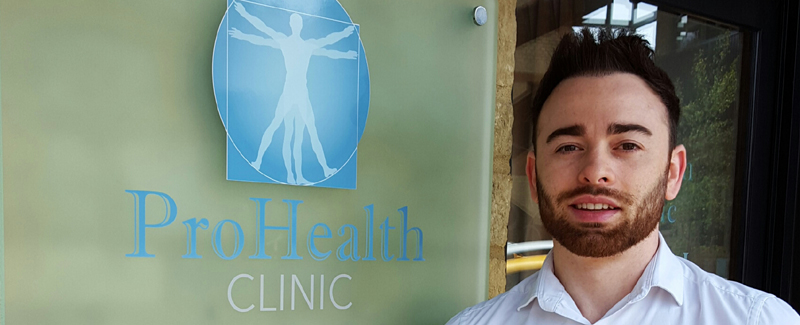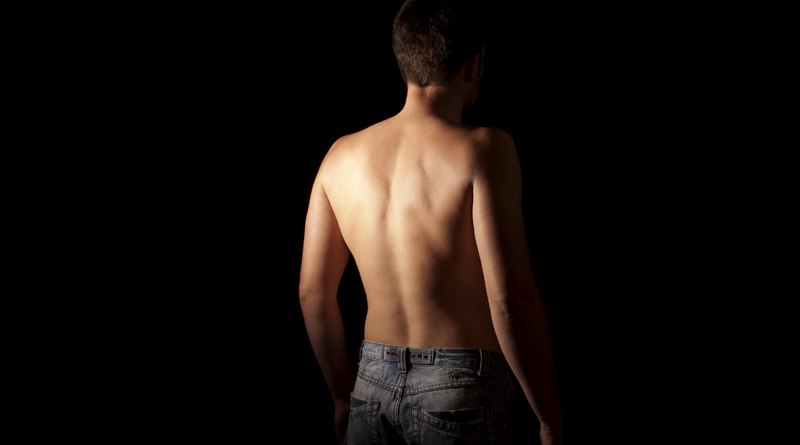TREATING/AVOIDING LOWER BACK PAIN
Low back pain costs the UK economy £3.5billion a year in lost productivity.
So, what causes it and how can it be treated?
Let’s start by looking at the causes, as by understanding these it is possible to avoid triggering low back pain:
Improper lifting techniques
If you lift something without bending your knees, or you twist whilst lifting, then it puts pressure on many of the structures in your lower back that can cause pain. A proper, evenly-balanced lifting technique ensures all the weight and pressure is distributed throughout your leg muscles.
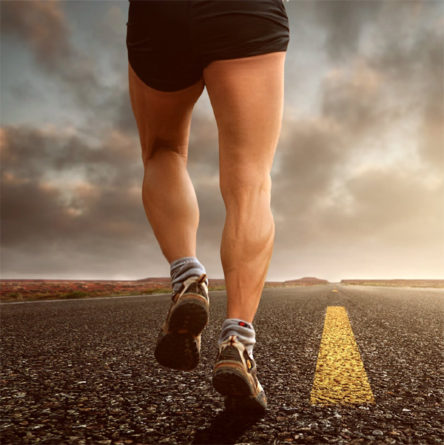
Tight buttock and hamstring muscles
Even if you do use a proper lifting technique, your lower back can still be left vulnerable to injury if your buttock and hamstring muscles are too tight. These muscles attach into your lower back, so they play a big role in supporting your back when lifting something from the floor. Also, these muscles are designed to absorb the force from each walking step we take. If the muscles are tight then that force transfers straight through into the lower back. The average person takes 6000 to 10,000 steps a day, so you can imagine how over time this can cause pain in the lower back. Ensure you stretch your buttock and hamstring muscles daily.
Poor core strength
Your core muscles are responsible for holding your spine and pelvis upright, and for protecting discs and ligaments within the spine from injury. If your core muscles are weak, it can lead to too much force going through your lower back causing either a ligament sprain or a slipped disc. Poor core strength can also lead to poor posture in routine activities such as sitting and standing.
Inactivity
Inactivity can cause low back muscles to lose strength and forget how to coordinate. If our muscles lose the ability to coordinate then it can leave the low back vulnerable to injuring from simple routine movements such as getting in and out of a car.
Weak mattress
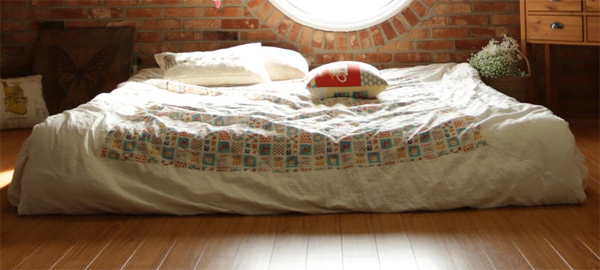 We spend a third of our lives on a mattress sleeping so it’s not surprising that an old or weak mattress can cause low back pain. Depending on the sleeping position, a weak mattress can put your low back muscles under strain. You may feel comfortable as you doze off, but if you are in that position for up to eight hours, muscles can go into spasm.
We spend a third of our lives on a mattress sleeping so it’s not surprising that an old or weak mattress can cause low back pain. Depending on the sleeping position, a weak mattress can put your low back muscles under strain. You may feel comfortable as you doze off, but if you are in that position for up to eight hours, muscles can go into spasm.
Misalignments
Misalignments are the most under recognised cause of chronic low back pain. They can be as a result of limping due to a previous injury, soft mattresses, repetitive movements, and pregnancy. Misalignments of the spinal joints puts pressure on the low back muscles during every movement you make.
Misalignments of the pelvis can often cause a difference in leg lengths. This can cause your body weight to become unevenly distributed between both legs, causing pain on the side of the lower back that is bearing most of the weight.
Poor posture
Poor posture is one of the most common causes of chronic low back pain, and can be the reason why a low back injury fails to get better. In our busy lives the postures we adopt are often subconscious and habitual. Poor posture whilst sitting can cause muscles and tendons to overstrain, leaving them vulnerable to going into spasm.
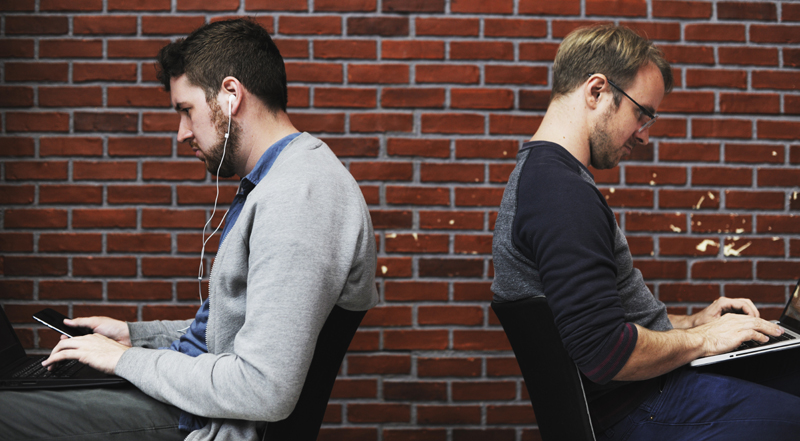
So, how can low back pain be treated?
Conventional Treatments
Prescription or over-the-counter medications can often be effective at reducing the symptoms of low back pain. Nonsteroidal anti-inflammatory drugs (NSAIDS) such a Ibroprofen can help if the pain is due to any inflammation pressing against a nerve. If the pain is due to tension in the muscles tightening around the nerve then muscle relaxants such a Diazepam can help.
These aren’t long-term solutions though, and won’t address the root cause of your symptoms or help prevent them from coming back. Long-term use of these types of medication can have negative effects on the health of your stomach and liver.
To help reduce the symptoms naturally and prevent them from returning, a more structured treatment approach needs to be adopted:
Heat/ice
Heat and ice can help both acute and chronic cases of low back pain. Use a procedure called contrast bathing; place ice or a cold compress over the low back for 10 minutes and then immediately place heat over the area for 10 minutes. This can be repeated twice an hour if needed.
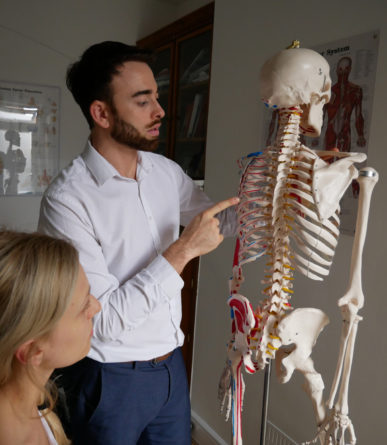
Osteopathy
Osteopathy is a system of alternative medicine that helps to both identify and address the root cause of an individual’s low back pain. Several orthopaedics tests will be used to determine which structure within the low back is causing the pain and then a combination of massage, stretching and gentle manipulation is used to help the injury to repair. Several stretches will also be prescribed to help sustain the results and prevent the symptoms from returning.
Acupuncture
If the cause of an individual’s low back pain is the result of a muscle spasm or strain then acupuncture can be effective at encouraging the spasm to release. Hair-thin needles (which are usually not felt) are inserted into the affected muscles.
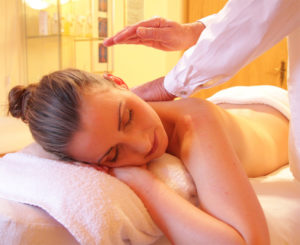 Massage therapy
Massage therapy
If the pain is caused by a muscle spasm or strain then massage therapy can be an effective.
Osteopathy, Acupuncture and Massage have all been approved by the NICE Guidelines (National Institute for Health and Care Excellence). Both NHS and private doctors in the UK use these guidelines to inform them of appropriate treatments.
Prolozone Therapy
Prolozone Therapy is an advanced form of prolotherapy which has both pain relieving and regenerative properties for the structure in the low back including muscles, ligaments and tendons. It was pioneered by an American physician, Dr Frank Shallenberger and involves the injection of Medical Ozone and nutrients to cause the proliferation, regeneration and repair of muscles, tendons and ligaments where they have suffered degeneration, injury or become painful and weak.
ABOUT THE AUTHOR
Oliver Eaton is a qualified and registered osteopath, Medical Acupuncturist and Musculoskeletal Injection Therapist. He specialises in the treatment of sciatica, arthritis and headaches/migraines with patients travelling from across the UK and Europe for treatment. He is one of the leading practitioners in his field on Harley Street, having built his reputation on achieving results with patients who had previously had no success elsewhere.
